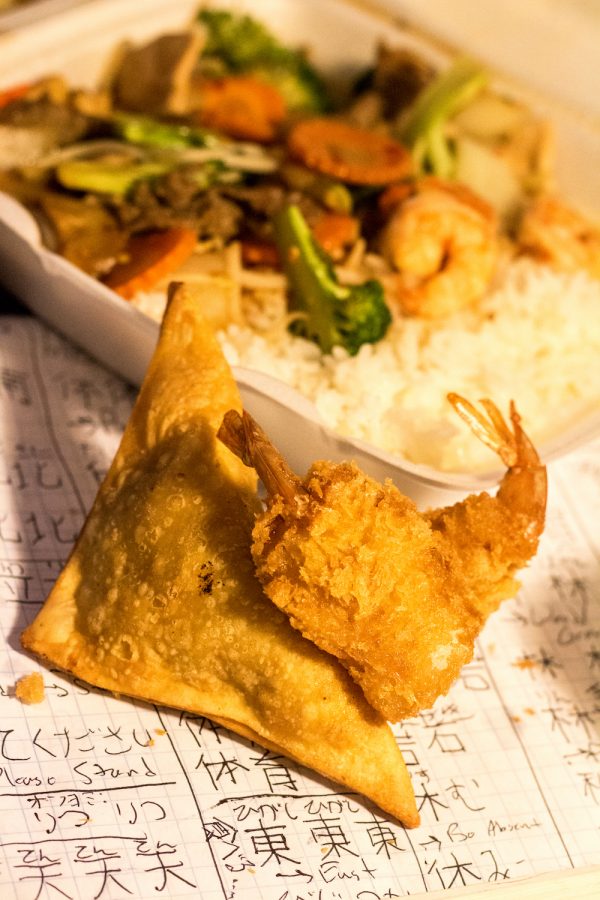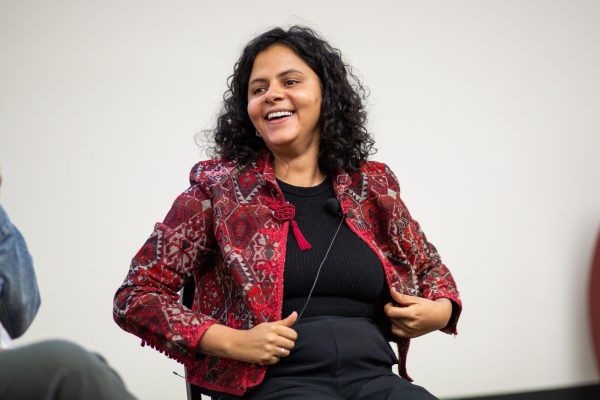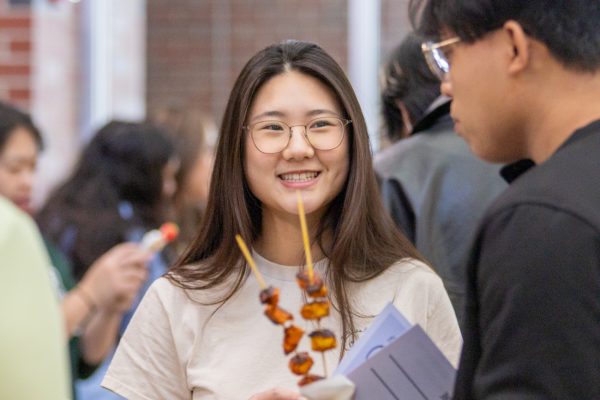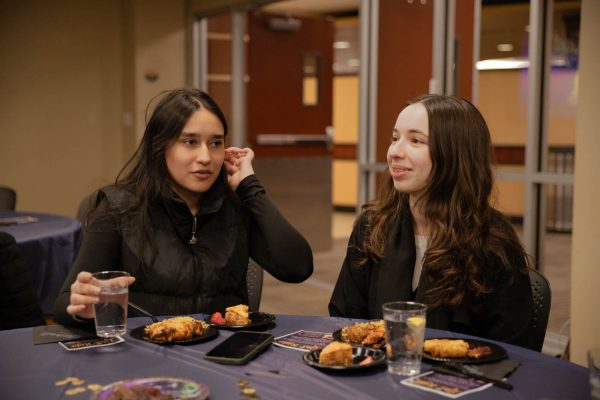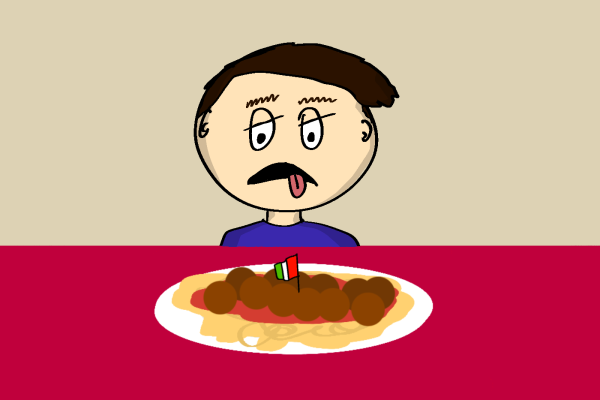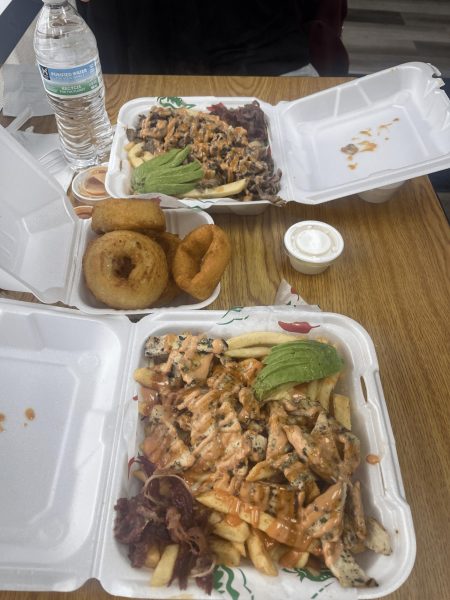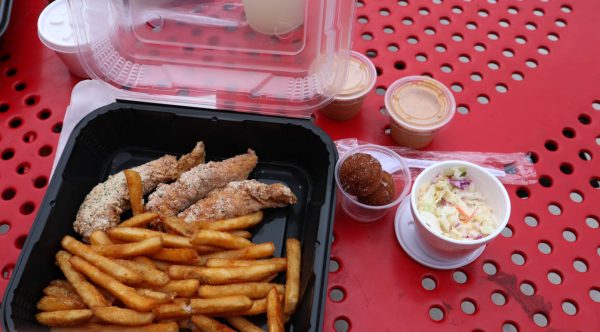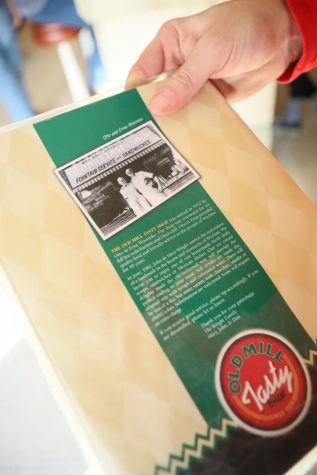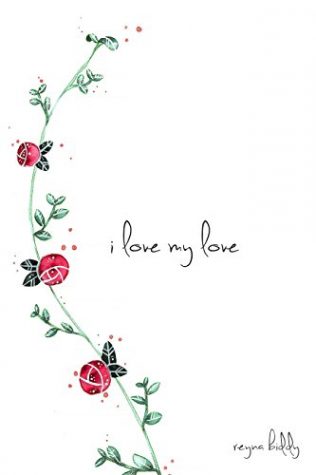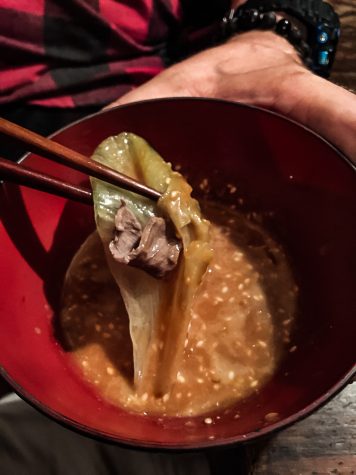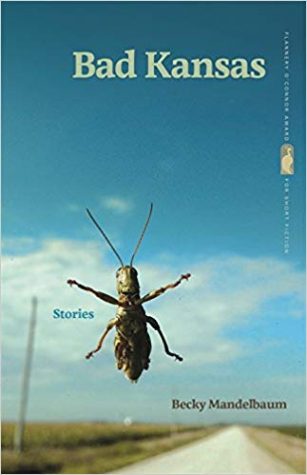Rethink Takeout: Ah So Oriental Cuisine – Cheap Takeout Meditation
Chinese takeout — It’s what we know as grease-stained carry out bags, fortune cookies, scents of sauté style Mongolian beef and Sichuan chicken emanating from oyster pails filled with steamed rice and topped with bouquets of cream cheese crab rangoons.
This is the legacy of Americanized Chinese cuisine. That said, few locals do it better, or cheaper, than south Wichita’s Ah-So Oriental Cuisine.
Run and operated locally and seemingly marooned in between Moe’s liquor store and a now boarded up Park Lane Heights Laundromat, Ah-So’s culinary auspices don’t seem all that promising.
However, in lieu of a home cooked meal this past week, I called in an order to Ah-So for pick up. To say the least, the experience was revelatory.
I sampled the following
The Triple Crown
(sauté shrimp, beef, chicken and vegetables draped over steamed rice)
Price : $5.85
Butterfly Shrimp (Fried, battered shrimp)
Price: $3.85
Fried Mandu (Pork dumplings of the Korean variety)
Price: $0.85 Each
Cream Cheese Crab Rangoons
Price: $0.85 Each
Egg Drop Soup
Price: $1.50
Why was this meal a revelation? Aside from sating my appetite amid wading through piles of unfinished term papers, Ah-So’s spread taught me something about the American diet: Americans are dangerously in love with the rich, sweet, and greasy of cuisine.
Was the Triple Crown sultry and filling? Was the butterfly shrimp tasty? Were the mandus satisfactory? Yes, yes and yes.
Frankly, I’ve never had better, cheaper local takeout Chinese. Though I couldn’t help but feel a tinge of guilt.
In Andrew Coe’s 2009 book, “Chop Suey: A Cultural History of Chinese Food in the United States,” Coe laments the post World War II tradition of quick, salty, sweet, and cheap, Chinese:
“American tastes . . . rule the meal,” he says in the book’s final paragraph. “Like their ancestors fifty and a hundred years ago, most Americans still expect Chinese food to be cheap, filling, familiar and bland.”
This perspective says something about the American sense of taste, that it just might be narcotized to the standard of cheap, salty, sweet cuisine being synonymous with something gourmet.
My meal from Ah-So was cheap and filling. The rice was steamed with just enough of the germ washed away to make the taste buds happy.
The steam from the Egg Drop broth cleared my sinuses as I slurped away at the soup. The crunch of each bite of butterfly shrimp was a ritual, which felt so reminiscent of a kind of childlike reverie that American consumers are so magnetically drawn towards.
The Triple Crown came stuffed with shrimp, beef and chicken smothered in a spicy garlic sauce and rounded with carrots, broccoli and sliced mushrooms. All were above average, especially given the affordable price.
These foods are cathartic and meditative.
Perhaps Coe was a skeptic of all things culturally appropriated. Maybe I am a biased eater whose parents engorged him with far too many of General Tso’s chicken dinners.
But one thing is certain. At Ah-So Oriental Cuisine you won’t wipe out your bank account or be left with a bad taste in your mouth. The food is superb and the prices humble.
What more can a student in the American consumer culture ask for?




